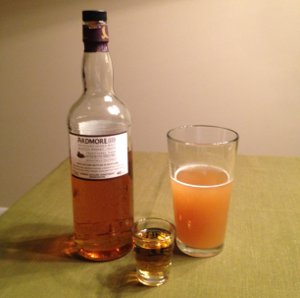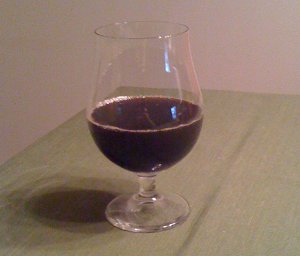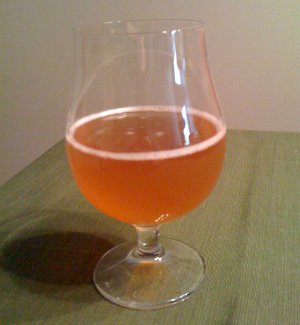When I read a book, especially a non-fiction book, I usually find myself dog-earing pages with passages I find particularly interesting or illuminating. To some book lovers, I’m sure this practice seems barbaric and disrespectful, but it’s never really bothered me. Indeed, the best books are the ones with the most dog-ears. Sometimes there are so many dog-ears that the width of the book is distorted so that the top of the book (which is where the majority of my dog-ears go) is thicker than the bottom. The book Flow, by Mihaly Csikszentmihalyi1 is one such book.
I’ve touched on this concept before, in posts about Interrupts and Context Switching and Communication. This post isn’t a direct continuation of that series, but it is related. My conception of flow in those posts is technically accurate, but also imprecise. My concern was mostly focused around how fragile the state of flow can be – something that Csikszentmihalyi doesn’t spend much time on in the book. My description basically amounted to a state of intense concentration. Again, while technically accurate, there’s more to it than that, and Csikszentmihalyi equates the state with happiness and enjoyment (from page 2 of my edition):
… happiness is not something that happens. It is not the result of good fortune or random chance. It is not something that money can buy or power command. It does not depend on outside events, but, rather, on how we interpret them. Happiness, in fact, is a condition that must be prepared for, cultivated, and defended privately by each person. People who learn to control inner experience will be able to determine the quality of their lives, which is as close as any of us can come to being happy.
Yet we cannot reach happiness by consciously searching for it. “Ask yourself whether you are happy,” said J.S. Mill, “and you cease to be so.” It is by being fully involved with every detail of our lives, whether good or bad, that we find happiness, not by trying to look for it directly.
In essence, the world is a chaotic place, but there are times when we actually feel like we have achieved some modicum of control. When we become masters of our own fate. It’s an exhilarating feeling that Csikszentmihalyi calls “optimal experience”. It can happen at any time, whether external forces are favorable or not. It’s an internal condition of the mind. One of the most interesting things about this condition is that it doesn’t feel like happiness when it’s happening (page 3):
Contrary to what we usually believe, moments like these, the best moments of our lives, are not the passive, receptive, relaxing times – although such experiences can also be enjoyable, if we have worked hard to attain them. The best moments usually occur when a person’s body or mind is stretched to its limits in a voluntary effort to accomplish something difficult and worthwhile. Optimal experience is thus something that we make happen. For a child, it could be placing with trembling fingers the last block on a tower she has built, higher than any she has built so far; for a swimmer, it could be trying to beat his own record; for a violinist, mastering an intricate musical passage. For each person there are thousands of opportunities, challenges to expand ourselves.
Such experiences are not necessarily pleasant at the time they occur. The swimmer’s muscles might have ached during his most memorable race, his lungs might have felt like exploding, and he might have been dizzy with fatigue – yet these could have been the best moments of his life. Getting control of life is never easy, and sometimes it can be definitely painful. But in the long run optimal experiences add up to a sense of mastery – or perhaps better, a sense of participation in determining the content of life – that comes as close to what is usually meant by happiness as anything else we can conceivably imagine.
This is an interesting observation. The best times of our lives are often hectic, busy, and frustrating while they’re happening, and yet the feeling of satisfaction we get after-the-fact seems worth the effort. Interestingly, since Flow is a state of mind, experiences that are normally passive can become a flow activity through taking a more active role. Csikszentmihalyi makes an interesting distinction between “pleasure” and “enjoyment” (page 46):
Experiences that give pleasure can also give enjoyment, but the two sensations are quite different. For instance, everyone takes pleasure in eating. To enjoy food, however, is more difficult. A gourmet enjoys eating, as does anyone who pays enough attention to a meal so as to discriminate the various sensations provided by it. As this example suggests, we can experience pleasure without any investment of psychic energy, whereas enjoyment happens only as a result of unusual investments of attention. A person can feel pleasure without any effort, if the appropriate centers in his brain are electrically stimulated, or as a result of the chemical stimulation of drugs. But it is impossible to enjoy a tennis game, a book, or a conversation unless attention is fully concentrated on the activity.
As someone who watches a lot of movies and reads a lot of books, I can definitely see what Csikszentmihalyi is saying here. Reading a good book will not always be a passive activity, but a dialogue2. Rarely do I accept what someone has written unconditionally or without reserve. For instance, in the passage above, I remember thinking about how arbitrary Csikszentmihalyi’s choice of terms was – would the above passage be any different if we switched “pleasure” and “enjoyment”? Ultimately, that doesn’t really matter. Csikszentmihalyi’s point is that there’s a distinction between hedonistic, passive experiences and complex, active experiences.
There is, of course, a limit to what we can experience. In a passage that is much more concise than my post on Interrupts and Context Switching, Csikszentmihalyi expands on this concept:
Unfortunately, the nervous system has definite limits on how much information it can process at any given time. There are just so many “events” that can appear in consciousness and be recognized and handled appropriately before they begin to crowd each other out. Walking across a room while chewing bubble gum at the same time is not too difficult, even though some statesmen have been alleged to be unable to do it; but, in fact, there is not that much more that can be done concurrently. Thoughts have to follow each other, or they get jumbled. While we are thinking about a problem we cannot truly experience either happiness or sadness. We cannot run, sing, and balance the checkbook simultaneously, because each one of those activities exhausts most of our capacity for attention.
In other words, human beings are kinda like computers in that we execute instructions in a serial fashion, and things like context switches are quite disruptive to the concept of optimal experience3.
Given all of the above, it’s easy to see why there isn’t really an easy answer about how to cultivate flow. Csikszentmihalyi is a psychologist and is thus quite careful about how he phrases these things. His research is extensive, but necessarily imprecise. Nevertheless, he has identified eight overlapping “elements of enjoyment” that are usually present during flow. Through his extensive interviews, he has noticed at least a few of these major components come up whenever someone discusses a flow activity. A quick summary of the components (pages 48-67):
- A Challenging Activity that Requires Skills – This is pretty self explanatory, but it should also be noted that “challenging” does not mean “impossible”. We need to confront tasks which push our boundaries, but which we also actually have a chance of completing.
- The Merging of Action and Awareness – When all of our energy is concentrated on the relevant stimuli. This is related to some of the below components.
- Clear Goals and Feedback – These are actually two separate components, but they are interrelated and on a personal level, I feel like these are the most important of the components… or at least, one of the most difficult. In particular, accurate feedback and measurement are much more difficult than they sound. Sure, for some activities, they’re simple and easy, but for a lot of more complex ones, the metrics either don’t exist or are too obtuse. This is something I struggle with in my job. There are certain metrics that are absolute and pretty easy to track, but there are others that are more subjective and exceedingly difficult to quantify.
- Concentration on the Task at Hand – Very much related to the second point above, this particular component is all about how that sort of intense concentration removes from awareness all the worries and frustrations of everyday life. You are so focused on your task that there is no room in your mind for irrelevant information.
- The Paradox of Control – Enjoyable experiences allow people to exercise a sense of control over their actions. To look at this another way, you could see it as a lack of worry about losing control. The paradox comes into play because this feeling is somewhat illusory. What’s important is the “possibility, rather than the actuality, of control.”
- The Loss of Self-Consciousness – Again related to a couple of the above, this one is about how when you’re involved in flow, concern about the self disappears. Being so engrossed in a project or a novel or whatever that you forget to eat lunch, and things along those lines. Interestingly, this sort of thing eventually does lead to a sense of self that emerges stronger after the activity has ended.
- The Transformation of Time – The sense of duration of time is altered. Hours pass by in minutes, or conversely, minutes pass by in what seem like hours. As Einstein once said: “Put your hand on a hot stove for a minute, and it seems like an hour. Sit with a pretty girl for an hour, and it seems like a minute. THAT’S relativity.”
So what are the implications of all this? There were a few things that kept coming to mind while reading this book.
First, to a large extent, I think this helps explain why video games are so popular. Indeed, many of the flow activities in the book are games or sports. Chess, swimming, dancing, etc… He doesn’t mention video games specifically, but they seem to fit the mold. Skills are certainly involved in video games. They require concentration and thus often lead to a loss of self-consciousness and lack of awareness of the outside world. They cause you to lose track of time. They permit a palpable sense of control over their digital environment (indeed, the necessity of a limited paradigm of reality is essential to video games, which lends the impression of control and agency to the player). And perhaps most importantly, the goals are usually very clear and the feedback is nearly instantaneous. It’s not uncommon for people to refer to video games in terms of addiction, which brings up an interesting point about flow (page 70):
The flow experience, like everything else, is not “good” in an absolute sense. It is good only in that it has the potential to make life more rich, intense, and meaningful; it is good because it increases the strength and complexity of the self. But whether the consequences of any particular instance of flow is good in a larger sense needs to be discussed and evaluated in terms of more inclusive social criteria. The same is true, however, of all human activities, whether science, religion, or politics.
Flow is value neutral. In the infamous words of Buckethead, “Like the atom, the flyswatter can be a force for great good or great evil.” So while video games could certainly be a flow activity, are they a good activity? That is usually where the controversy stems from. I believe the flow achieved during video game playing to be valuable, but I can also see why some wouldn’t feel that way. Since flow is an internal state of the mind, it’s difficult to observe just how that condition is impacting a given person.
Another implication that kept occurring to me throughout the book is what’s being called “The gamification of everything”. The idea is to use the techniques of game design to get people interested in what are normally non-game activities. This concept is gaining traction all over the place, but especially in business. For example, Target encouraged their cashiers to speed up checkout of customers by instituting a system of scoring and leaderboards to give cashiers instant feedback. In the book, Csikszentmihalyi recounts several examples of employees in seemingly boring jobs, such as assembly lines, who have turned their job from a tedious bore to a flow activity thanks to measurement and feedback. There are a lot of internet startups that use techniques from gaming to enhance their services. Many use an awards system with points and leaderboards. Take FourSquare, with its badges and “Mayorships”, which turns “going out” (to restaurants, bars, and other commercial establishments) into a game. Daily Burn uses game mechanics to help people lose weight. Mint.com is a service that basically turns personal finance into a game. The potential examples are almost infinite4.
Again, none of this is necessarily a “good” thing. If Target employees are gamed into checking out faster, are they sacrificing accuracy in the name of speed? What is actually gained by being the “mayor” of a bar in Foursquare? Indeed, many marketing schemes that revolve around the gamification of everything are essentially ways to “trick” customers or “exploit” psychology for profit. I don’t really have a problem with this, but I do think it’s an interesting trend, and its basis is the flow created by playing games.
On a more personal note, one thing I can’t help but notice is that my latest hobby of homebrewing beer seems, at first glance, to be a poor flow activity. Or, at least, the feedback part of the process is not very good. When you brew a beer, you have to wait a few weeks after brew day to bottle or keg your beer, then you have to wait some time after that (less if you keg) before you can actually taste the beer to see how it came out (sure, you can drink the unfermented wort or the uncarbonated/unconditioned beer after primary fermentation, but that’s not an exact measurement, and even then, you have to wait long periods of time). On the other hand, flow is an internal state of mind. The process of brewing the beer in the first place has many places for concentration and smaller bits of feedback. When I thought about it more, I feel like those three hours are, in themselves, something of a flow activity. The fact that I get to try it a few weeks/months later to see how it turned out is just an added bonus. Incidentally, the saison I brewed a few weeks ago? It seems to have turned out well – I think it’s my best batch yet.
In case you can’t tell, I really enjoyed this book, and as longwinded as this post turned out, there’s a ton of great material in the book that I’m only touching on. I’ll leave you with a quite that seems to sum things up pretty well (page 213): “Being in control of the mind means that literally anything that happens can be a source of joy.”
1 – I guess it’s a good thing that I’m writing this as opposed to speaking about it, as I have no idea how to pronounce any part of Mihaly Csikszentmihalyi’s name.
2 – Which is not to take away the power of books or movies where you sit down, turn your brain off, and veg out for a while. Hey, I think True Blood is coming on soon…
3 – This is, of course, a massive simplification of a subject that we don’t even really understand that well. My post on Interrupts and Context Switching goes into more detail, but even that is lacking in a truly detailed understanding of the conscious mind.
4 – I have to wonder how familiar Casinos are with these concepts. I’m not talking about the games of chance themselves, though that is also a good example of a flow activity (and you can see why gambling addiction could be a problem as a result). Take, for example, blackjack. The faster the dealer gets through a hand of blackjack, the higher the throughput of the table, and thus the more money a Casino would make. Casinos are all about probability, and the higher the throughput, the bigger their take. I seriously wonder if blackjack dealers are measured in some way (in terms of timing, not money).




